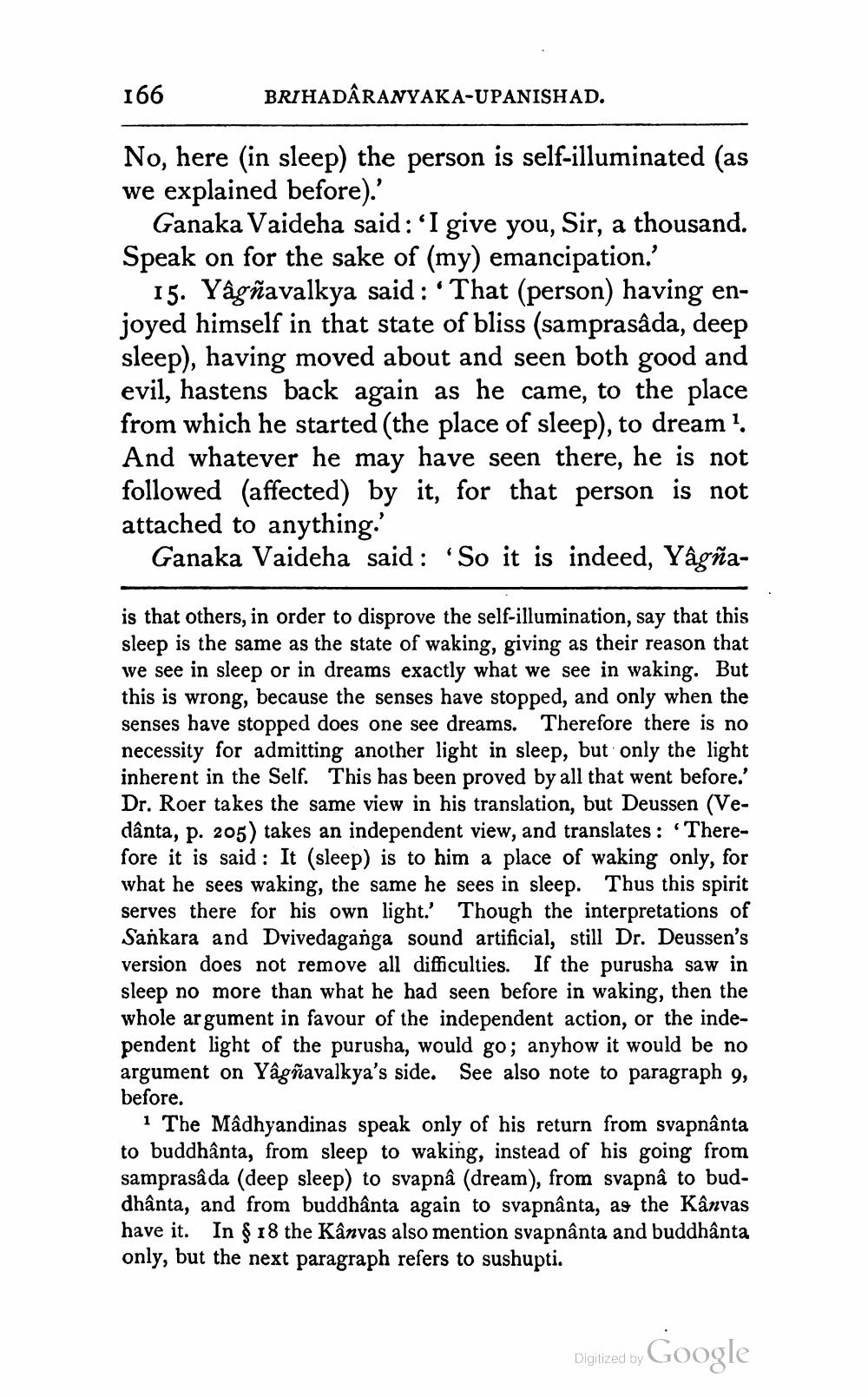________________
166
BRIHADARANYAKA-UPANISHAD.
No, here (in sleep) the person is self-illuminated (as we explained before).'
Ganaka Vaideha said: 'I give you, Sir, a thousand. Speak on for the sake of (my) emancipation.'
15. Yâgñavalkya said: “That (person) having enjoyed himself in that state of bliss (samprasada, deep sleep), having moved about and seen both good and evil, hastens back again as he came, to the place from which he started (the place of sleep), to dream. And whatever he may have seen there, he is not followed (affected) by it, for that person is not attached to anything.'
Ganaka Vaideha said : "So it is indeed, Yagña
is that others, in order to disprove the self-illumination, say that this sleep is the same as the state of waking, giving as their reason that we see in sleep or in dreams exactly what we see in waking. But this is wrong, because the senses have stopped, and only when the senses have stopped does one see dreams. Therefore there is no necessity for admitting another light in sleep, but only the light inherent in the Self. This has been proved by all that went before.' Dr. Roer takes the same view in his translation, but Deussen (Vedânta, p. 205) takes an independent view, and translates : “Therefore it is said : It (sleep) is to him a place of waking only, for what he sees waking, the same he sees in sleep. Thus this spirit serves there for his own light.' Though the interpretations of Sankara and Dvivedaganga sound artificial, still Dr. Deussen's version does not remove all difficulties. If the purusha saw in sleep no more than what he had seen before in waking, then the whole argument in favour of the independent action, or the independent light of the purusha, would go; anyhow it would be no argument on Yâgñavalkya's side. See also note to paragraph 9, before.
1 The Mâdhyandinas speak only of his return from svapnânta to buddhânta, from sleep to waking, instead of his going from samprasada (deep sleep) to svapnâ (dream), from svapnâ to buddhânta, and from buddhânta again to svapnânta, as the Kanvas have it. In § 18 the Kânvas also mention svapnânta and buddhânta only, but the next paragraph refers to sushupti.
Digitized by
Digitized by Google




